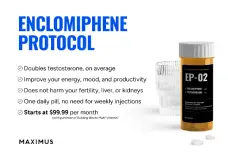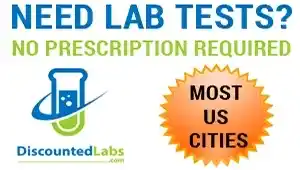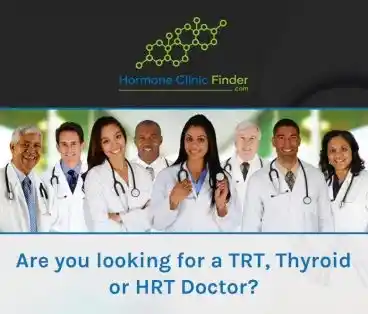You are using an out of date browser. It may not display this or other websites correctly.
You should upgrade or use an alternative browser.
You should upgrade or use an alternative browser.
hCG: An alternative approach for the treatment of low testosterone
- Thread starter madman
- Start date
-
- Tags
- hcg monotherapy
Nelson Vergel
Founder, ExcelMale.com
I will watch it tonight. I am glad he has slides and subtitles 
I have seen the complete video and I find it very impacting about the use of hcg, I wish it was a new light, but it is from in 2014 and I can’t see any movement toward using systematically hcg instead of testosterone... then somethig doesn’t work very well when treating testisterone deficiency sindrome only with HCG.
May be it could be appropriate in situations when the main goal is to improve somatic conditions but sexual performance or libido is not the matter, which do is in younger people.
I have seen the best result when hcg is just supplementing the exogenous testosterone.
HCG doesn’t work exactly the same way than LH, it make the testicles to produce bigger amounts of estradiol, being a limiting factor for its use as replacing of LH.
Do you agree? @Nelson Vergel
May be it could be appropriate in situations when the main goal is to improve somatic conditions but sexual performance or libido is not the matter, which do is in younger people.
I have seen the best result when hcg is just supplementing the exogenous testosterone.
HCG doesn’t work exactly the same way than LH, it make the testicles to produce bigger amounts of estradiol, being a limiting factor for its use as replacing of LH.
Do you agree? @Nelson Vergel
madman
Super Moderator
Late Onset Hypogonadism Update - Excel Male TRT Forum
Late-Onset Hypogonadism - New Point of View (2012) Andrzej Gomuła* The Andropause Institute, Warsaw, Poland 1. Introduction Long-term testosterone deficiency related to age may adversely affect the health, anatomy, and physiology of man. The implementation of testosterone boost therapy...
madman
Super Moderator
Any way to get some additional information on the protocols being used? What about the suppression of hpta by hcg - in the presentation he had people recovering pretty fast after stopping and if I understood correctly settle at higher levels of natural T?
4. The treatment of late-onset hypogonadism
4.1 Late-onset hypogonadism and hCG therapy
The effect of the treatment of 908 patients taking hCG was described in 2010 (Gomula & Rabijewski, 2010). Below, I present a further study of 1200 men (age range 20-89 years; mean, 54). The mean follow-up period of the patients was over 37 months. During the therapy with hCG (2 x 5000 i.u. per week), there was an average increase in serum concentrations of total testosterone from 18.4 nmol/L to 38.59 nmol/L. It was noted that during the hCG therapy, there was no increase in SHBG. On the contrary, the SHBG concentrations even showed a slight decrease. This meant that as the result of hCG treatment, free and bioavailable testosterone concentrations increased. The rise was proportional to that in total testosterone, as was reported (Fiers & Kaufman, 1999). There was an average increase in free testosterone concentrations from 0.0829 ng/mL (1.98%) to 0.201 ng/mL (2.29%) The bio-available testosterone concentration also increased: − on average from 1.94 ng/mL (46.4%) to 4.71 ng /mL (53.6%). At the same time, there was a steady increase in the average concentration of estradiol, from 138.6 pmol/L to 280.9 pmol/L. In parallel, the average PSA level decreased by 40% (from 3.09 ng/mL to 1.83 ng/mL) after 37 months of therapy. These results are shown in Table 9, below.
Last edited:
It always puzzled me how and why he ended up using 5000iu, and no less than twice per week, the most sensible scenario is that pregnyl etc come in that and are labeled single use.4. The treatment of late-onset hypogonadism
4.1 Late-onset hypogonadism and hCG therapy
The effect of the treatment of 908 patients taking hCG was described in 2010 (Gomula & Rabijewski, 2010). Below, I present a further study of 1200 men (age range 20-89 years; mean, 54). The mean follow-up period of the patients was over 37 months. During the therapy with hCG (2 x 5000 i.u. per week), there was an average increase in serum concentrations of total testosterone from 18.4 nmol/L to 38.59 nmol/L. It was noted that during the hCG therapy, there was no increase in SHBG. On the contrary, the SHBG concentrations even showed a slight decrease. This meant that as the result of hCG treatment, free and bioavailable testosterone concentrations increased. The rise was proportional to that in total testosterone, as was reported (Fiers & Kaufman, 1999). There was an average increase in free testosterone concentrations from 0.0829 ng/mL (1.98%) to 0.201 ng/mL (2.29%) The bio-available testosterone concentration also increased: − on average from 1.94 ng/mL (46.4%) to 4.71 ng /mL (53.6%). At the same time, there was a steady increase in the average concentration of estradiol, from 138.6 pmol/L to 280.9 pmol/L. In parallel, the average PSA level decreased by 40% (from 3.09 ng/mL to 1.83 ng/mL) after 37 months of therapy. These results are shown in Table 9, below.
Nelson Vergel
Founder, ExcelMale.com
hCG Mixing Calculator
HCG Mixing Protocol Calculator
Similar threads
- Replies
- 4
- Views
- 2K
- Replies
- 3
- Views
- 931
- Sticky
- Replies
- 31
- Views
- 6K
Online statistics
- Members online
- 3
- Guests online
- 615
- Total visitors
- 618
Totals may include hidden visitors.
Latest posts
-
-
-
-
Psilocybin therapy is effective for treatment-resistant depression
- Latest: carlweathers
-
Re use the individual Cypionate vials or throw away?
- Latest: ClashCityRocker
-
Help with blood test results and erectile dysfunction
- Latest: Guided_by_Voices













